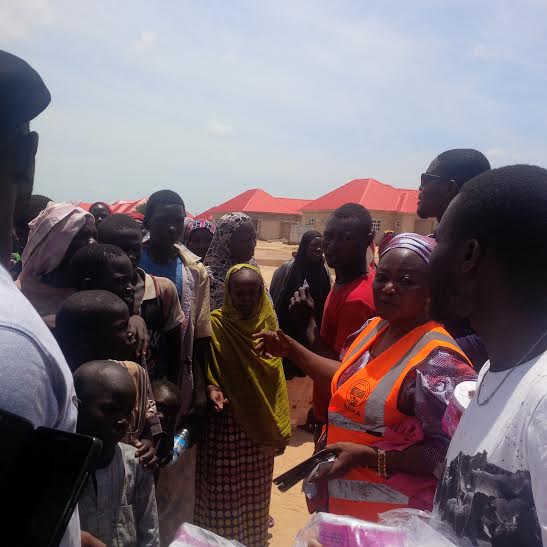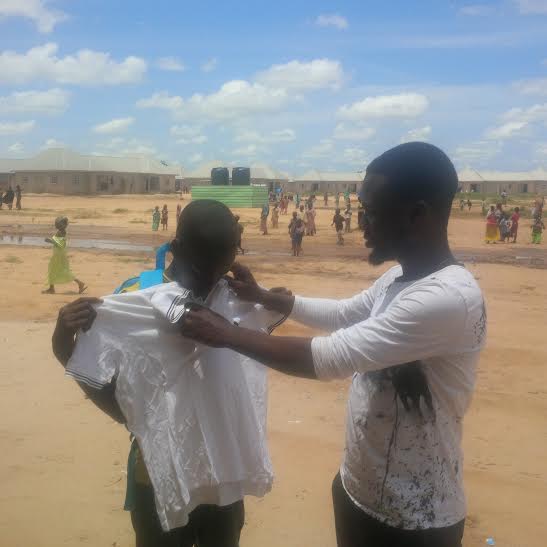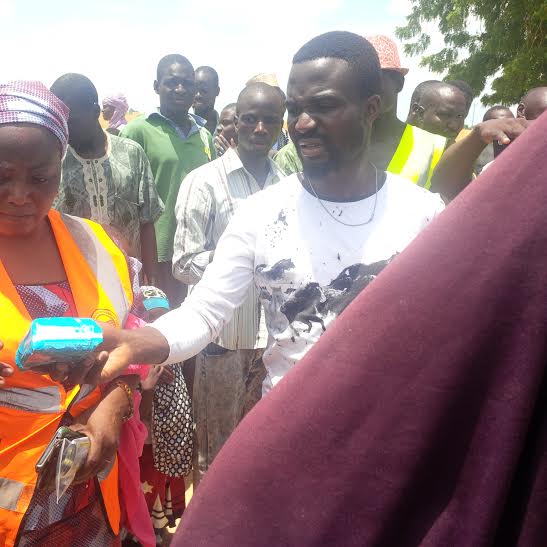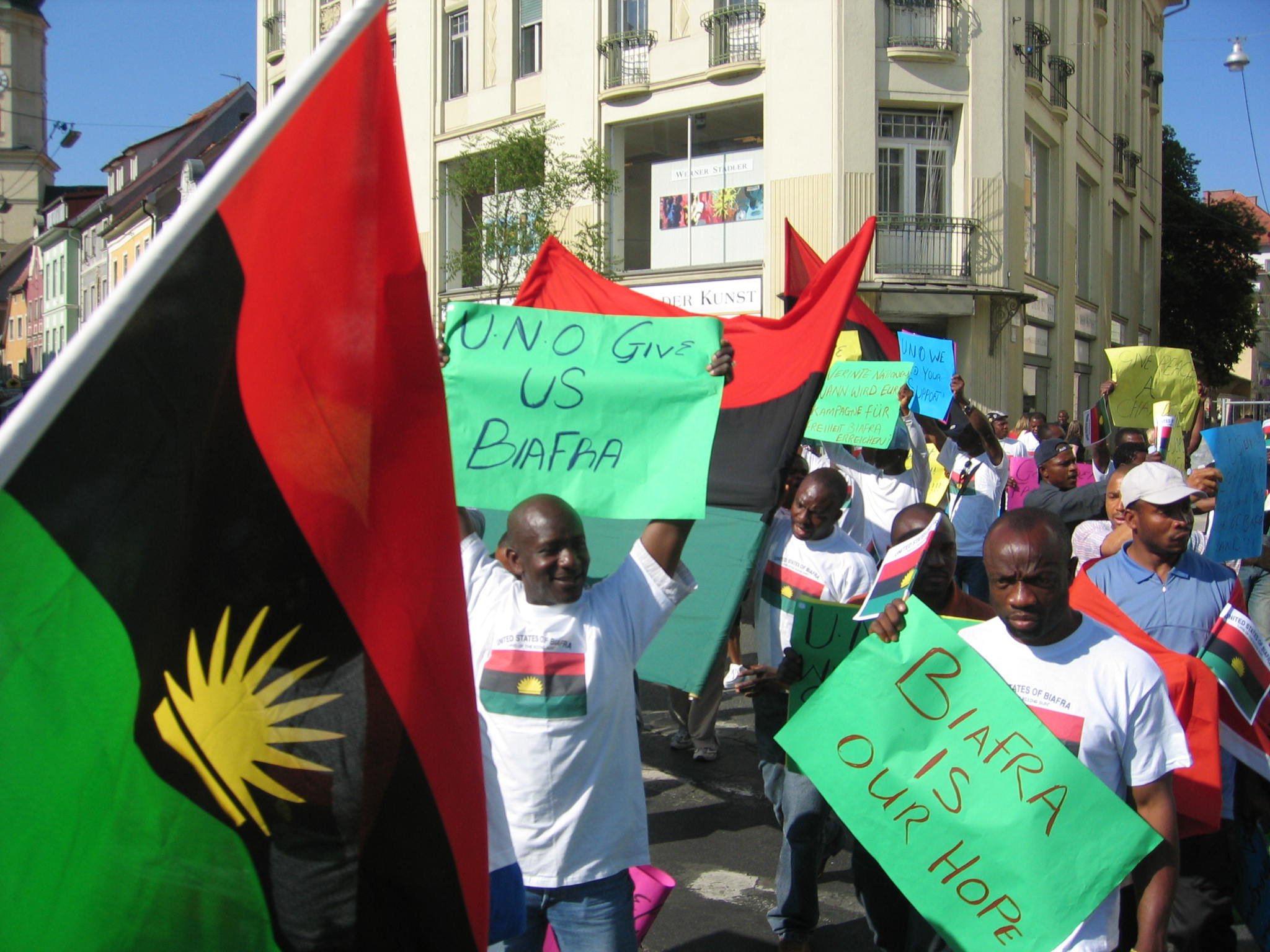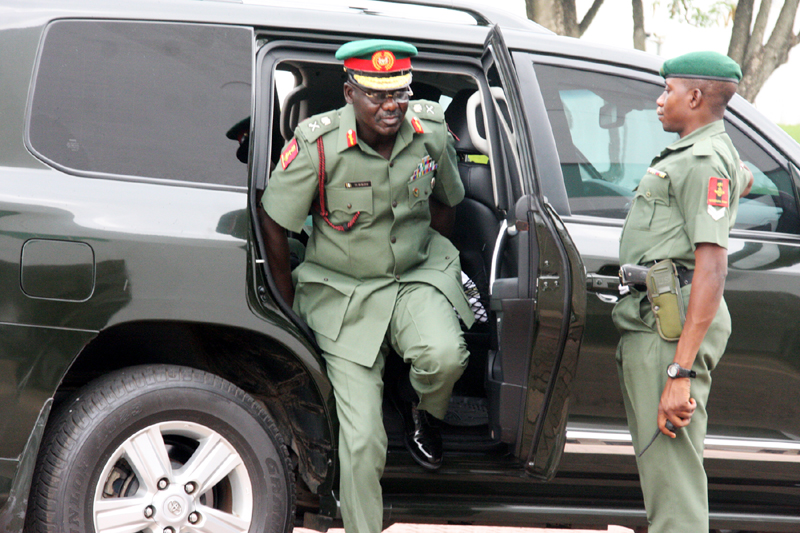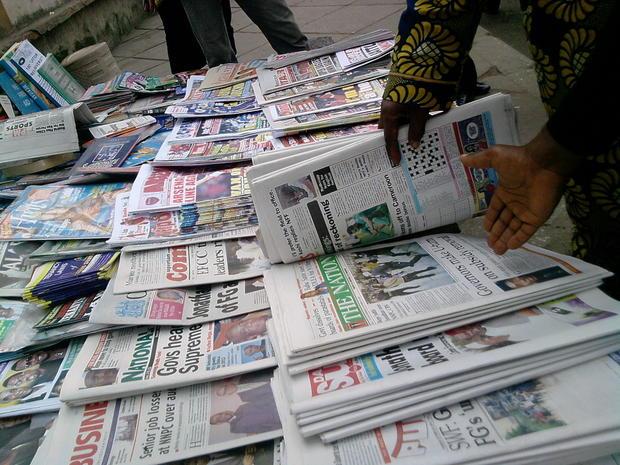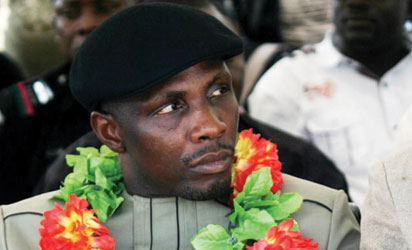“I want these things to get to the people we actually brought them for,” I tell Jack and J-Force as we exchange ideas on how to move the relief materials to any of the Internally Displaced Persons (IDPs) camp.
“That’s true,” Jack says, telling of cases where camp government officials who receive relief materials, turn them in for their own use.
“It is true that most of the donations made to us are not getting to us,” one of the IDPs told a Vanguard newspaper reporter in a November 1 publication of the newspaper. “They (camp officials) sell some of the gift items to people; they sell some of the food items to food sellers and those who care to buy.”
“I have someone we can consult on this,” Jack says. And we drive to Borno Radio & Television, BRTV, to see Aji Modu, a senior reporter whom Jack has trusted over the years.
Advertisement
“I will like we take these things to where Chibok people are camped,” I say, shaking hands with Aji Modu, who appears excited to receive us. “Oh, well, many displaced Chibok people have returned.” he tells us.
“The military has been able to, adequately, secure the town and many of them camped in Maiduguri thought they should return home,” he adds. “Some good news!”
I scream. In April 2014, Boko Haram abducted more than 200 girls in their school in Chibok, and more than a year after, the girls are yet to be found. The insurgents had also launched attacks on the village in the same year, leaving many, displaced. Aji Modu talks about many other camps, but stays on the Gubio-Road Camp.
Advertisement
“Of about 22 IDPs camps in Bornu, this should be the largest. Gwoza, Baga, Bama have been attacked. Oh, Bama was totally sacked, I mean the whole LG,” he says this with an expression of sadness.
“Gubio-Road Camp has many of this Bama people; about 5,000 displaced persons are here. The camp officials there are transparent with donations they get,” he assures as he gives us the contact of one of the officials.
Exiting the premises of BRTV, Aji Modu walks us to the gate.
“I was at the Gubio-Road camp two weeks ago on a reporting assignment, and where I stood, a teenage girl ran to meet me. ‘When the insurgents attacked our village, what I’m wearing is the only thing I escaped with. I have not had a change of clothes for weeks that we’ve been here.’ I couldn’t continue with the assignment that took me there,” Aji Modi says.
Advertisement
“I had to leave immediately, and I went to wife, asking her to give me at least six gowns of hers that I would give this girl. I also have some little boys staying in my house now. I had seen them wandering and when I spoke with them, they told me they were from Bama, and they couldn’t see their parents anymore. Whatever food you give to my sons is what you should give to these boys, I told my wife.”
Aji Modu is excited he could render help to a few of these displaced kids.
We drive towards Gubio Road where the camp is located. Covering a massive land area are the dispersed uncompleted housing units that would make a housing estate when completed. For the time being, however, it now serves as the camp for displaced persons.
“Dead zone!” the soldier at the gate tells us, as he ushers us in.
Advertisement
“Dead zone?” I ask, raising an eyebrow at him. He shrugs and says, “Do you know how many dead bodies they bring out from here on weekly basis?” Jack, J-Force and I look across one another’ faces.
We meet with Lieutenant Issa, the military officer in charge of the camp. He welcomes us warmly, and asks that we bring the materials the next day when we will also be meeting with the NEMA and SEMA officials.
Advertisement
GUBIO ROAD IDP CAMP
The next morning, Jack, J-Force and I arrive at the Gubio-Road IDPs camp with the two Ghana-Must-Go bags containing the relief materials. Welcoming us from under the shade of a tree where they were seated were Hajia Zainab Umar, the NEMA coordinator; Aminu Amburfa, her assistant; a few other NEMA and SEMA officials; and a few soldiers and members of the Civilian JTF.
“We heard there are about 5,000 displaced persons here,” I say, my eyes aiming Hajia Umar’s.
Advertisement
“Five? We have over 7,000 internally displaced persons here,” she says, fumbling through a book that looks like the register. Appreciating our coming, she tells us that there are still many things to do for the IDPs.
“Anyone can be displaced tomorrow, you know,” she says, smiling at us.
Advertisement
“You are doing what’s expected of responsible citizens. But, we have a problem,” she says, flashing a smile at us.
“How do we distribute these things to all of them? 7,000? If we have been informed earlier, we would have made arrangements to separate those we think are in urgent need of some of the stuff. If we start to give these things now to a select few, the others will think they are being cheated. So what do you think we should do? Let’s put heads together and find a way to doing this,”
As we all exchange suggestions, I take a look round the camp. Men, women with their kids are all seated in groups, all of them staring at us, from afar.
“But, what did you bring?” Hajia interrupts. “Well, one bag has toiletries: sanitary pads, toilet rolls, soaps, toothpaste and roll-on; and the other bag has clothing, mostly for women and girls.
“We can go check it,” J-Force suggests, and we all move to where the car is parked. J-Force opens the booth, brings out the bag of clothing, and unwraps. From every corner that they’ve been seated and some standing and keenly watching us, the displaced men, women and kids run as fast as they can toward us.
“This is what I am saying!” Hajia sighs, looking a bit confused.” Line up! Line up!!” the soldiers and members of the JTF attempt to control the overwhelming crowd.
“We are yet to decide on how to go about the distribution of these seemingly small materials and these ones are already queuing?” I ask myself.
TWO BOYS, NO PARENTS, NO CLOTHES
Hajia spots a woman having two boys around her. She beckons the woman to come with the boys.
“Please, I need clothes for these boys,” she says, resting her hand gently on my shoulder.
“After Boko Haram attacked their village and killed their parents, this woman saw the boys and took them along when everybody was fleeing for safety. They have no clothes.”
I look at the boys; their feet are with no shoes, too. “But most of the clothes, I think, are for girls,” I tell Hajia, as J-Force searches through the bag.
J-Froce brings out a few t-shirt that appears feminine. “They are girls’, you see,” I tell Hajia. She grabs them. “Please, clothe is clothe, just let these boys have these ones,” she begs.
We bring out the other bag, and we begin to give out things, randomly, totally neglecting the impatient male’s queue.
“Ha!” the girls in the school, Hajia exclaims, her index finger in her mouth.
“There is a school here?” I ask, looking surprised.
“Yes. Just a few blocks away. And I have observed that some of them aren’t coming to class again. I’ve been looking for ways to encouraging them,” she tells us.
“We are reserving the only pack of roll-on, half of the sanitary pads and half of the clothes for those at the school, please,” I tell Jack and J-Force. And as we drop the remaining items into the booth and J-Force ignites the car engine so we take off to the school, a crowd surrounds us, screaming. Members of the JTF quickly drive them away, paving way for us. As we drive on, some still run after us.
We arrive at the school, two blocks of about six rooms. Two of the uncompleted buildings serve as the school here. We enter one of the classes, and from the dusty, bare floor where the kids sit cross-legged, they rise and collectively greet: “Good morning sir, good morning ma!”
“How are you all?” I ask. “Fine, thank you sir,” they chorus. There is no blackboard. Just a part of the wall has been painted black. Each student, to his or her lap, is a blue bag with UNICEF brand.
We bring out the items and we begin to distribute to them. While this goes on, Hajia introduces me to some of the teachers.” They teach voluntarily,” she tells me as I shake hands with them. “Nobody is paying them a dime.”
I shake my head, pitifully. As Hajia talks on, we notice a girl staring wonderingly at the bottle of roll-on in her hands.” You use it for your armpit,” Hajia stoops, patting her on the back, and gesturing. The girl smiles, and hurriedly puts the bottle inside her bag.
“Don’t mind her, she is shy,” Hajia tells me, as we both smile at her. Hajia, who, undoubtedly, has been motherly with the kids, regales us with many stories of the displaced kids here.
We are in the last class, and almost emptying the bags. “Is there anything for the teachers?” One of the teachers, whispering, pinches me softly on the back on my palm. Hajia overhears. “Oh, that’s true o,” Hajia says, begging that we reserve a little toiletries. We are left with just five toilet-rolls. “But, of what use is this, especially, for these male teachers,” I ask myself, feeling disappointed that we had forgotten the teachers.
At the bottom of the bag for clothing is a pair of stilettos. “Hahaha, nobody will wear this one here o,” Hajia says, laughing. Jack, J-Force, the other officials and I laugh with her, too. “But let’s see if one of the nurses at the camp clinic can use it,” Hajia eventually suggests. We leave the school amidst cheers from the pupils.
“They are happy you came,” Hajia says, smiling. “If you hear what they are saying in Hausa, they are praying for God to bless you. And next time, please, we also need chalks o,” Hajia says, looking into my eyes. “I know. We need blackboards, too,” I tell her and she smiles.
Branching at the camp clinic, my heart sinks when I see that there are no beds. Sick women and kids lie on bare floor to receive treatment.
“But this is the largest IDP camp in the entire North-East and the situation is like this?” I raise a curious face at Jack. “Not even a feel of N1bn from the billions raised by the former government!”
In July 2014, former president, Goodluck Jonathan had inaugurated the Victims Support Fund Committee, whose key objective was to identify sources and ways of raising sustainable funding to support victims of Boko Haram terror activities.
“As at the end of February 2015, a total of N53.42 billion and $15 million was made as pledge, while the pledge collected figure stood at N13.27 billion and $18.85 million,” Ms Akerele, a member of this committee explains in a TweetChat organized by two civil society groups, EiE Nigeria and BudgIT.
“Records indicate that N24bn of these pledges have so far been redeemed,” writes Laila Johnson in her article, Victim Support Fund: Who Is Really Benefitting?
“However, 90% of this amount has been idle in the six banks for the last one year, with the remaining amount spent on the launch event itself (N400m), office renovation and furnishing and administrative expenses. Only a minimal amount has been spent on the victims themselves. This raises a serious question: who is really benefitting from the VSF?”
We return to the shade under the tree, the place that appears as Hajia and her team’s office. We sign the visitors’ book as Hajia and her team members shower us with appreciative words.
As we drive out of Gubio-Road IDPs camp, a truck, loaded with a new set of internally displaced persons, makes its way into the camp. And, my heart sinks, deeper.
Blight on humanity and the resilience of a people is a four-part series. You may read the first here, second here, and third here.

